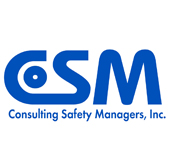How to Get Supervisors to See Risk
A maintenance technician is about to repair a robotic arm in a production cell, a routine task. The production cell has five of these robotic arms, which move parts between machines.
The rectangular production cell is enclosed by plexiglass walls on all four sides. Doors provide access. The doors are protected with safety interlocks. This means when a door opens the controller places the robotic arms and machines in SAFE MODE, shutting down the equipment.
The maintenance technician working solo opens the door and enters the production cell. While maneuvering around the obstacles, one of the robotic arms activates. Sadly, the maintenance technician is struck and fatally injured.
Several causes came together at once. The production cell had a major flaw in its safety by design. Safety inspections missed the flaw. Hundreds of routine tasks were performed without lockouts. Supervisors did not trap human errors nor reverse the risk-taking. Safety audits missed all of this safety breakdown.
Attendees at our SafeTask® Supervision seminar study several incidents like this one. They learn to recognize accident causation with special attention on the relationship between safety and work tasks.
Accidents large or small are usually preceded by warning signs. Whether their workplace presents CNC machines, forklifts, presses, calendars, molten metal furnaces, welders, shredders, zero turn mowers, confined spaces, or work at height, supervisors who can see risk during work tasks will often detect these warning signs and take action. This concept is called Safety Supervision.
Organizations place tremendous trust in supervisors. Organizations expect supervisors to prevent team members from getting hurt. Safety supervision is a fundamental responsibility of being a supervisor.
The key to supervisors successfully leading safety for a work team is adding safety supervision skills to their skill set. Supervisors can learn how to lead a work team towards a high rate of safe behaviors. Supervisors can watch, understand, and influence how safely their team members perform tasks.
An organization can achieve significant improvement of its safety results when supervisors learn how to take charge of safety for their work teams.
SafeTask® Supervision is an instructor-led curriculum for supervisors to learn how to produce a high rate of safe behaviors during work tasks. Safety professionals and operations managers can become trainers. Or, we offer onsite training too. Our next public seminar is May 2, 2019, near Charlotte, NC.
About Bryan Raughley
Bryan’s expertise is safety supervision, behavior-based safety, and safety management systems. He works with all levels of an organization by applying the SafeTask® System to implement solutions, making work tasks safer.

